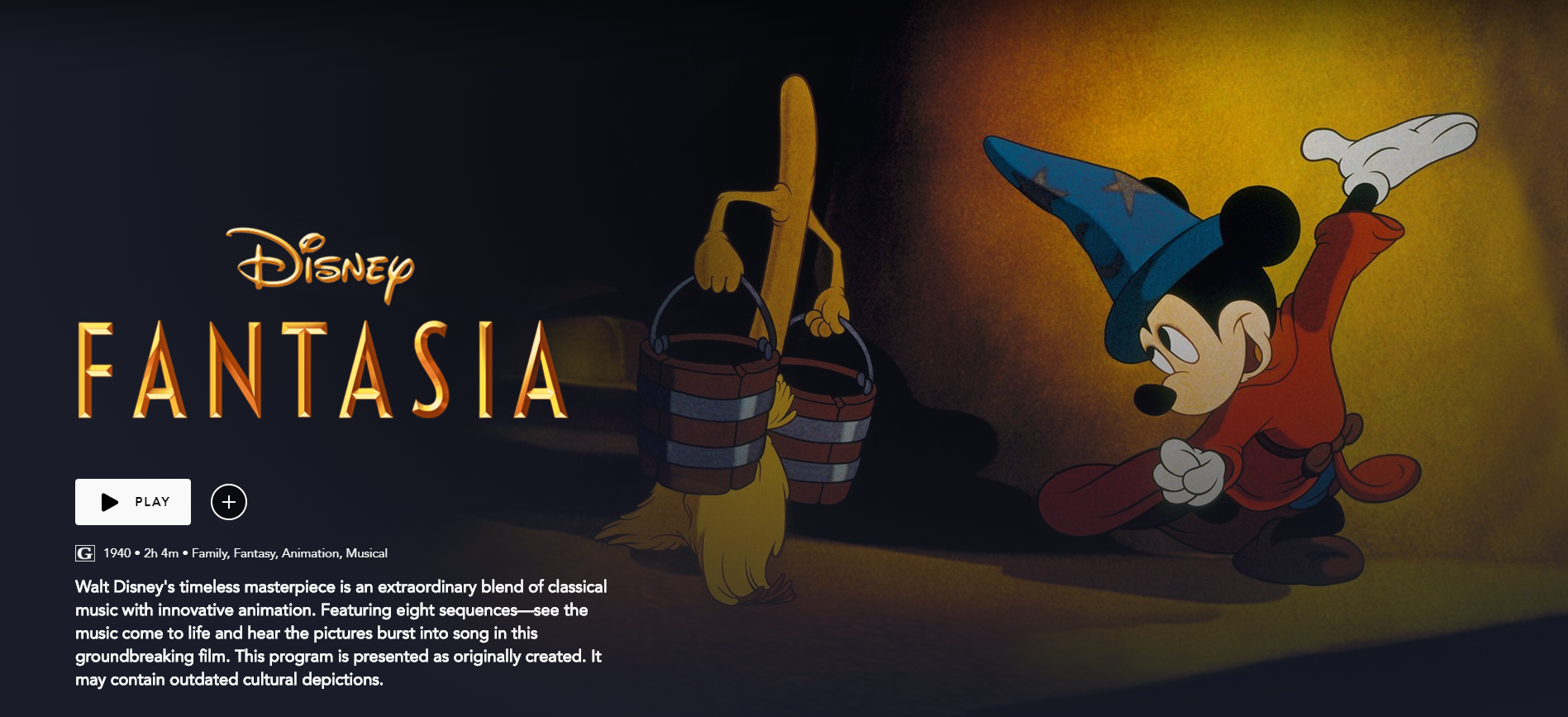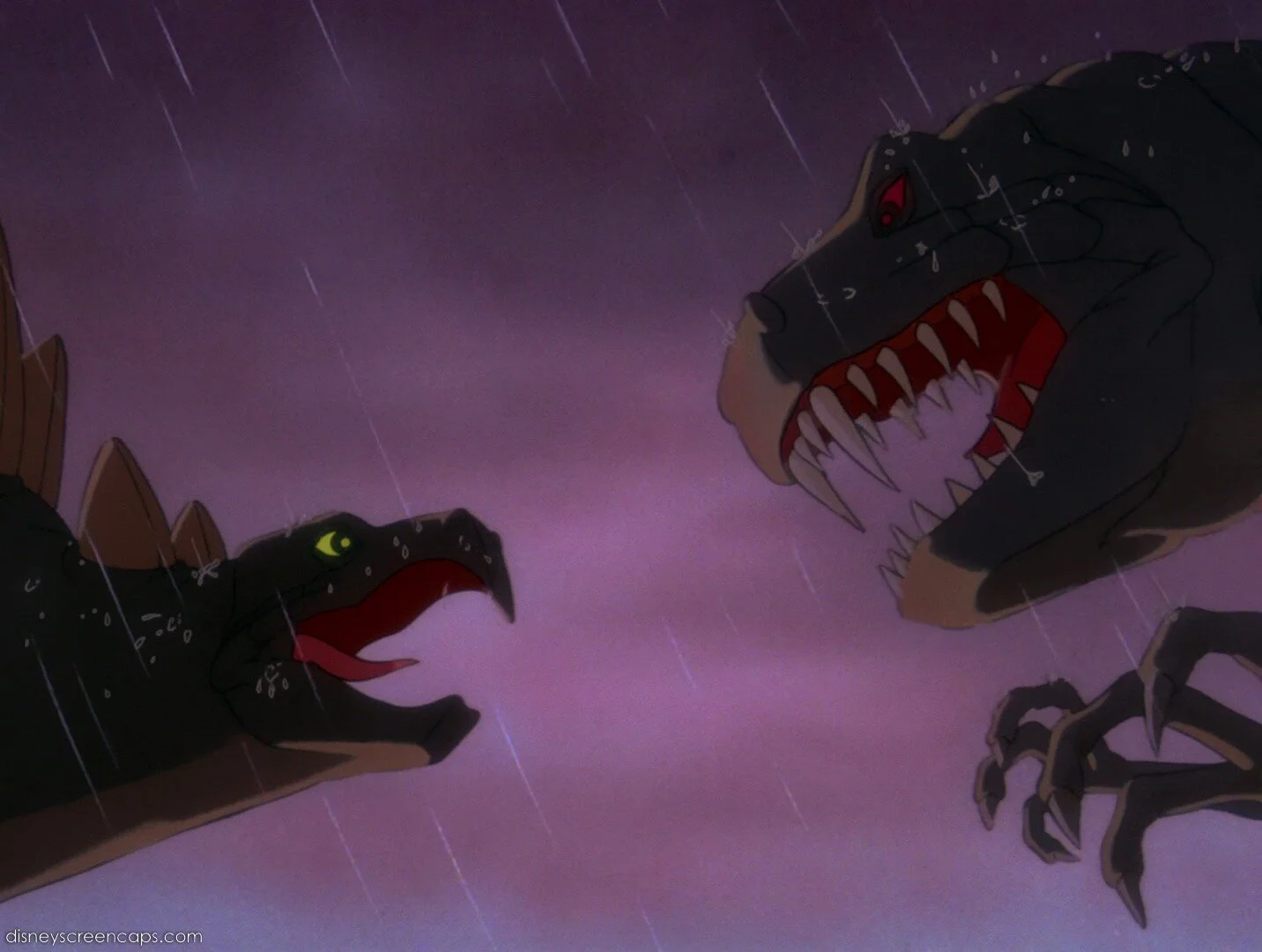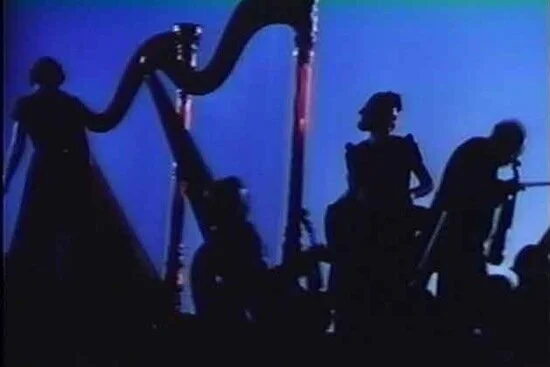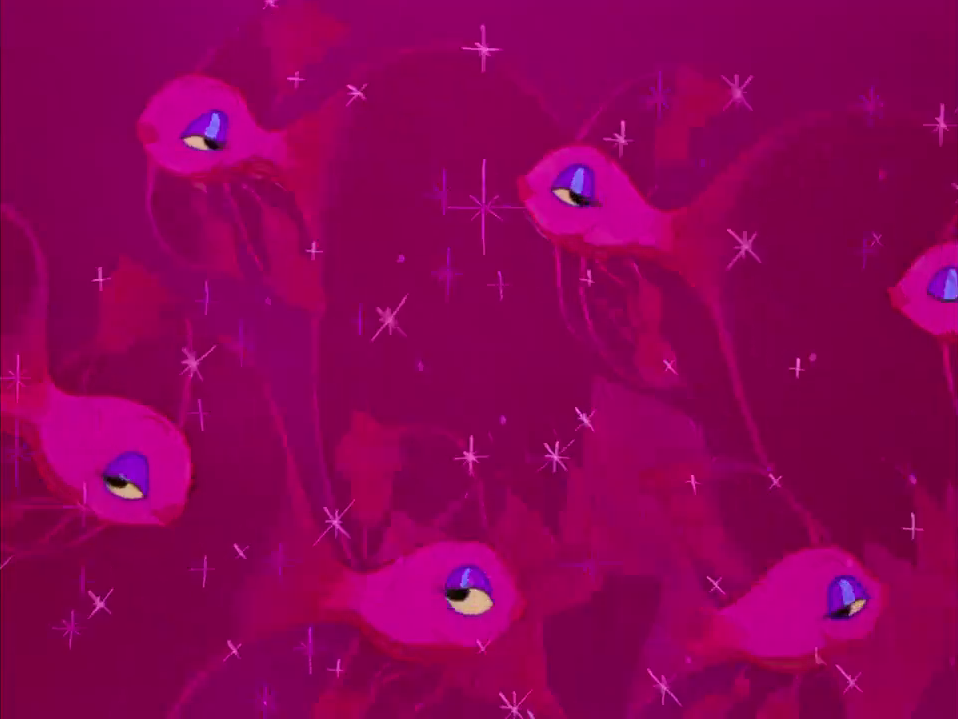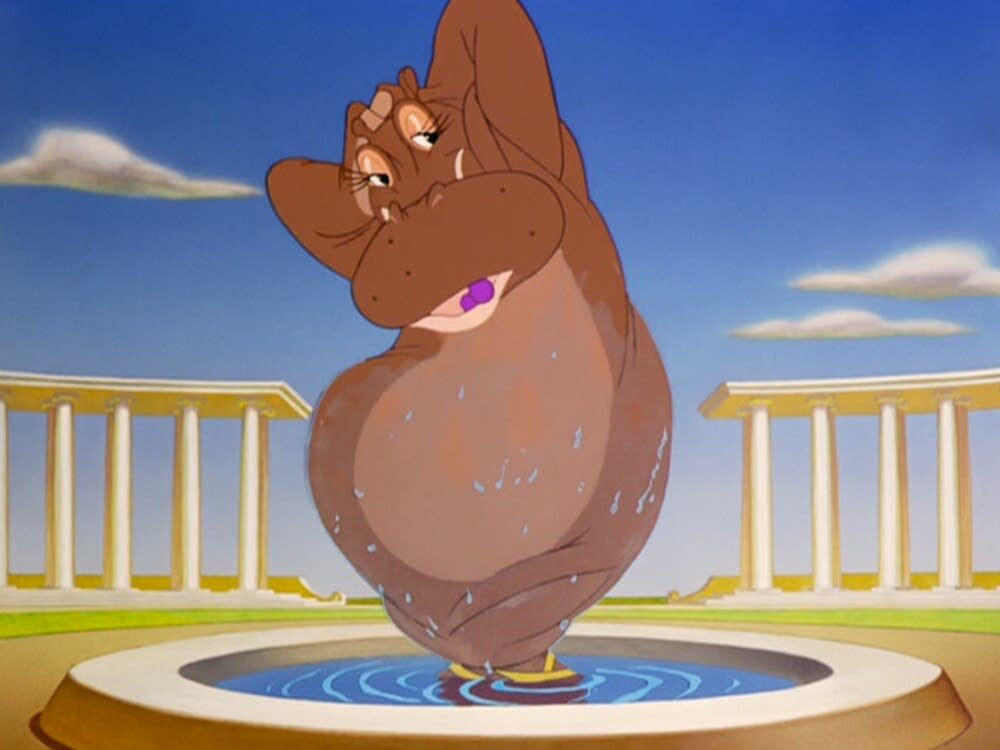Review: Fantasia (DMC #3)
Our Disnerd Movie Challenge continues! Last night we watched Fantasia, the third movie in the challenge.
Synopsis
Fantasia is an exploration of classical music melded with animations that interpret the emotions and stories told through the music. The film opens with the silhouettes of the orchestra members tuning their instruments, and throughout the film we catch glimpses of them playing.
The movie consists of several pieces of classical music with their own visuals or stories. First is Toccata and Fugue in D Minor by Johann Sebastian Bach where we see abstract visuals that change with the tone and rhythm of the music. Next is The Nutcracker Suite by Pyotr Ilyich Tchaikovsky in which we are treated to several mini animated scenes of fairies, fish, and dancing mushrooms and flowers moving in time to the music. In the next piece, The Sorcerer's Apprentice by Paul Dukas, Mickey Mouse takes on the role of the apprentice who gets carried away with a spell. Then comes Rite of Spring by Igor Stravinsky which is visually portrayed as the early years of the Earth leading up to the age of the dinosaurs, followed by an intermission and the introduction of the Soundtrack (a single line that changes shape as it portrays the sounds of various instruments).
The second half of the movie continues with The Pastoral Symphony by Ludwig van Beethoven which portrays the story of unicorns, fauns, pegasi, cupids, and centaurs as they prepare for a festival in honor of Bacchus. This is followed by a ballet of ostriches, hippos, elephants, and crocodiles set to Dance of the Hours by Amilcare Ponchielli. The finale begins with Night on Bald Mountain by Modest Mussorgsky where the devilish Chernabog summons his demons and ends with Franz Schubert’s Ave Maria, visually portrayed as a candlelight processional walking through a forest.
Thoughts Before Watching
Megan: On the one hand, I’m kind of dreading it because by the rules of the challenge I’ll have to sit through the parts of the movie I used to fast-forward through as a kid. On the other hand, it’s been ages since I’ve seen this movie and I’m somewhat looking forward to seeing my favorite clips again, like the dancing mushrooms or the pegasi.
Kevin: This film always bored me, to be honest. Even though I last watched it a couple years ago, the only segment I’ve enjoyed was The Sorcerer’s Apprentice. That’s really about it for me.
Thoughts After Watching
Fantasia is a unique masterpiece.
Kevin: I think I understand why some call this a masterpiece. It’s counted as an animated film, but its primary medium is music. Where a film like Snow White is primarily visual and its music complements the story, Fantasia is a musical concept and the animation supplements it. There’s really nothing else like this from the Disney studios (well, with the possible exception of Fantasia 2000).
There are a few things I like. The creature animations and morphs in The Nutcracker Suite are done well, as is the general timing of the music and pictures on screen. My favorite segment is still The Sorcerer’s Apprentice, but I have a new appreciation for some parts of Rite of Spring. Also, the “soundtrack” is the best character in the film.
But can it still be a masterpiece if it’s boring?
Still I’m just…bored when I watch this. I suppose if this movie were just The Sorcerer’s Apprentice and Rite of Spring I would enjoy it more. Even then, I doubt I would rank it high. I’m sure I’ll get some flak for this, but though others might think highly of Fantasia, I couldn’t care less to watch it again. I’m curious what my thoughts will be after we watch Fantasia 2000, which I remember enjoying much more as a child.
From a feminist point of view, this movie fails.
Megan: So if you’ve been following with us this far you probably knew this was coming: Fantasia fails the Bechdel test. “But nobody talks!” you might be thinking, “so how can you possibly score it?!” Well, in actuality, there are some pieces of dialogue—the male conductor narrates our journey from one musical piece to the next, and Mickey Mouse at one point comes up to speak to him. We never hear any female voice, unless you count the female voices mixed in with the choral group of men and women singing Ave Maria at the very end.
But let’s take dialogue out of it for a moment and just assess things visually. From the very beginning when we see the orchestra members take their places and begin tuning their instruments, we only see two women: the harp players. We watch as they walk through a sea of male violinists to take their places. Every other instrument is played by a man, and the conductor is also a man.
Surprise, surprise—female characters are sexualized objects of desire.
Once we move into the animations things don’t get much better, as the majority of these females are sexualized in some way. Some of the first animated characters we see are fairies, all of them portrayed as female and nude as they spread dew drops, change leaves gold, or bring about a winter frost. We then see female fish that play coy as they hide from the viewer and proceed to swim in a seductive dance. Later in the second half of the movie, the Mount Olympus story opens with “centaurettes” (as the conductor calls them) emerging from bathing in a pond, their human halves nude until they are dressed by the male cupids. As the story progresses, the centaurettes are dressed and adorned to be displayed as desirable objects for the male centaurs. Notice that not a single male centaur has put any effort into his appearance. Even the animal ballet does not fully escape unscathed, as here, too, we see the lead female hippo as the lead male crocodile’s object of desire.
And yet, these were some of my favorite parts of the movie as a kid.
Problematic gendered messaging aside, the Mount Olympus segment is still my favorite part of the entire movie. From the adorable black and white baby pegasus, to the matchmaking love story of the centaurs, there’s a real story here with a colorful world and fun music.
Thank goodness for fast-forward!
When my siblings and I would watch Fantasia as kids we tended to fast forward through the “boring” parts and go straight to our favorites. The opening number was always too abstract—with no story to follow it was easily forgettable—so we would skip straight to The Nutcracker Suite. Our favorite parts were the dancing mushrooms and the dancing flowers where we’d try to match their choreography as we danced in front of the TV, swirling into a frenzy and then freezing when the music stopped. I never really liked The Sorcerer’s Apprentice—that sorcerer was creepy, and I didn’t like that Mickey broke the rules—but I loved the dinosaurs that came after, and pretty soon it was the Mount Olympus segment (where my siblings and I would pick which pegasus we were and which centaurette’s fashion we liked best) and the ballet animals. After that, though, we’d usually turn the movie off. None of us kids liked watching Chernabog and his demons, and the final Ave Maria was just so slow and boring with nothing interesting happening on the screen.
Verdict
Megan: Okay, so this is a bit complicated for me, because I like some segments and don’t like others, so I’ve decided to do a bit of math here to score this (and like a good student I’m showing my work). Here’s the breakdown:
Toccata and Fugue in D Minor: 0 (yes, zero - it’s that forgettable)
The Nutcracker Suite: 4 (segment breakdown for how I got this number is below)
dew drop fairies: 4
dancing mushrooms: 7
spinning flowers: 5
sexy fish: 0
leaping flowers: 7
autumn fairies: 4
winter fairies: 4
The Sorcerer’s Apprentice: 3
Rite of Spring (dinosaurs): 5
The Soundtrack: 4
The Pastoral Symphony (Mount Olympus): 8
Dance of the Hours (ballet animals): 4
Night on Bald Mountain: 0
Ave Maria: 0
Add it all together, divide by 9, and the grand total is 3.
